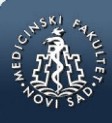md-medicaldata
Main menu:
- Naslovna/Home
- Arhiva/Archive
- Godina 2024, Broj 1
- Godina 2023, Broj 3
- Godina 2023, Broj 1-2
- Godina 2022, Broj 3
- Godina 2022, Broj 1-2
- Godina 2021, Broj 3-4
- Godina 2021, Broj 2
- Godina 2021, Broj 1
- Godina 2020, Broj 4
- Godina 2020, Broj 3
- Godina 2020, Broj 2
- Godina 2020, Broj 1
- Godina 2019, Broj 3
- Godina 2019, Broj 2
- Godina 2019, Broj 1
- Godina 2018, Broj 4
- Godina 2018, Broj 3
- Godina 2018, Broj 2
- Godina 2018, Broj 1
- Godina 2017, Broj 4
- Godina 2017, Broj 3
- Godina 2017, Broj 2
- Godina 2017, Broj 1
- Godina 2016, Broj 4
- Godina 2016, Broj 3
- Godina 2016, Broj 2
- Godina 2016, Broj 1
- Godina 2015, Broj 4
- Godina 2015, Broj 3
- Godina 2015, Broj 2
- Godina 2015, Broj 1
- Godina 2014, Broj 4
- Godina 2014, Broj 3
- Godina 2014, Broj 2
- Godina 2014, Broj 1
- Godina 2013, Broj 4
- Godina 2013, Broj 3
- Godina 2013, Broj 2
- Godina 2013, Broj 1
- Godina 2012, Broj 4
- Godina 2012, Broj 3
- Godina 2012, Broj 2
- Godina 2012, Broj 1
- Godina 2011, Broj 4
- Godina 2011, Broj 3
- Godina 2011, Broj 2
- Godina 2011, Broj 1
- Godina 2010, Broj 4
- Godina 2010, Broj 3
- Godina 2010, Broj 2
- Godina 2010, Broj 1
- Godina 2009, Broj 4
- Godina 2009, Broj 3
- Godina 2009, Broj 2
- Godina 2009, Broj 1
- Supplement
- Galerija/Gallery
- Dešavanja/Events
- Uputstva/Instructions
- Redakcija/Redaction
- Izdavač/Publisher
- Pretplata /Subscriptions
- Saradnja/Cooperation
- Vesti/News
- Kontakt/Contact
 Pasterovo društvo
Pasterovo društvo
- Disclosure of Potential Conflicts of Interest
- WorldMedical Association Declaration of Helsinki Ethical Principles for Medical Research Involving Human Subjects
- Committee on publication Ethics
CIP - Каталогизација у публикацији
Народна библиотека Србије, Београд
61
MD : Medical Data : medicinska revija = medical review / glavni i odgovorni urednik Dušan Lalošević. - Vol. 1, no. 1 (2009)- . - Zemun : Udruženje za kulturu povezivanja Most Art Jugoslavija ; Novi Sad : Pasterovo društvo, 2009- (Beograd : Scripta Internacional). - 30 cm
Dostupno i na: http://www.md-medicaldata.com. - Tri puta godišnje.
ISSN 1821-1585 = MD. Medical Data
COBISS.SR-ID 158558988
KORIŠTENJE PREVENTIVNE ZDRAVSTVENE ZAŠTITE ODRASLOG STANOVNIŠTVA U REPUBLICI SRPSKOJ
/
UTILIZATION OF PREVENTIVE HEALTH CARE SERVICES AMONG ADULTS IN REPUBLIC OF SRPSKA
Authors
BSlađana Šiljak1, Jelena Niškanović1, Dragana Stojisavljević1
1Institut za javno zdravstvo Republike Srpske, Republika Srpska, Bosna i Hercegovina
UDK: 614.2(497.6)"2010" 316.61(497.6)"2010"
616-036.886-084:796
The paper was received 11.01.2018. Accepted: 18.02.2018
Rad primljen 11.01.2018. Rad prihvaćen: 18.02.2018.
Corresponding author/ Autor za korespodenciju:
Doc dr sc med. Slađana Šiljak
Jovana Dučića 1, 78 000 Banja Luka
+387 65 856 617
e-mail: sladjanaps@gmail.com
Izvor finansiranja: Ministarstvo zdravlja i socijalne zaštite Republike Srpske uz finansijsku i profesionalnu podršku Svjetske Banke.
Sažetak
Uvod. Nejednakosti u korištenju preventivnih usluga su prisutne u evropskim zemljama.
Cilj rada. Ispitati razlike u korištenju usluga preventivne zdravstvene zaštite u odnosu na demografske, socijalno-ekonomske i karakteristike životnog stila odraslog stanovništva Republike Srpske, Bosna i Hercegovina.
Metode rada. Studija je izvedena po tipu studije presjeka na nacionalnom nivou. Od 4 673 odrasle osobe, 4 128 je anketirano (1 906 muškaraca i 2 222 žena). Bivarijantna logistička regresiona analiza je korištena za procjenu uticaja različitih varijabli na korištenje preventivnih usluga zdravstvene zaštite u RS.
Rezultati. U poređenju sa muškarcima, žene su češće koristile preventivne usluge [UO=5.06; 95% interval povjerenja (95% IP) = 3.48–7.37]. Osobe u gradskom području koriste češće preventivne usluge (UO=1,75; 95% IP = 1.26–2.44), a osobe koje žive same to čine rjeđe (UO=0,40; 95% IP = 0.29–0.54). Ljudi sa srednjim obrazovanjem i siromašni koriste značajno rjeđe preventivne usluge u odnosu na osobe višeg obrazovanog nivoa i bogate. Dvostruko rjeđe preventivne usluge koriste pušači, osobe koje konzumiraju alkohol, osobe čija je fizička aktivnost i procjena zdravlja dobra a dvostruko češće osobe sa prekomjernom tjelesnom masom i zaposleni. Preventivne usluge u odnosu na zdravu populaciju češće koriste osobe oboljele od masovnih nezaraznih oboljenja.
Zaključak. Prisustvo značajnih demografskih i socijalno-ekonomskih nejednakosti, kao i nejednakosti u životnom stilu i zdravstvenom stanju osoba koje koriste preventivne usluge u Republici Srpskoj impliciraju na aktivno provođenje preventivnog Programa u svim zdravstvenim ustanovama RS.
Ključne reči:
korištenje preventivnih usluga, životni stilovi, istraživanje zdravstvenog stanja, nejednakosti u zdravlju, Republika Srpska
Abstract
Introduction. Inequalities in preventive health care services utilization exist in european countries. The aim of this study was to investigate differencies in utilization of preventive health care services (PHCS) in regard to demographic, socio-economic and lifestyle characteristics among adults in Republic of Srpska (RS), Bosnia and Herzegovina.
Methods. This study is a cross sectional study at the national level. A total of 4 673 adults, 4 128 were interviewed (1 906 males and 2 222 females). Bivariate logistic regression analysis was used to assess the influence of different variables on the utilization of preventive health care services in RS.
Results. As compared with men, women utilized more frequently PHCS [odds ratio (OR) = 5.06; 95% confidence interval (95% CI) = 3.48–7.37]. People in urban areas utilized more frequently (OR=1,75; 95% CI = 1.26–2.44) but those who lived alone utilized less frequently PS (OR=0,40; 95% CI = 0.29–0.54).). People with middle education and poorer utilized PHCS less frequently than those better-off. Two times less fequently utilized PHCS people who are smokers, alcohol consumers, and people with good self perception of health and physical activity but two times more frequently utilized PHCS overweight and employed people. Both males and females who had non communicable diseases more frequently utilized PHCS than people without diseases.
Conclusion. This study has shown that demographic, socio-economic, lifestyle and health status inequalities in the pattern of utilization of preventive health care services in RS initiate active providing of preventive services in health care system.
Keywords:
preventive health care service utilization, health survey, inequalities in health, Republic of Srpska
Reference / Literatura
- World Health Organization. Health 2020. A European policy framework and strategy for the 21st century,2013.Available from: http://www.euro.who.int/__data/assets/pdf_file/0011/199532/Health2020-Long.pdf. Accessed December 13, 2017
- United Nations. General Assembly. Political Declaration of the High-level Meeting of the General Assembly on the Prevention and Control of Non-communicable Diseases General Assembly of the United Nations; 2012. Available from: https://www.worlddiabetesfoundation.org/sites/default/files/political_declaration_en.pdf. Accessed 2017, December 21
- World Health Organization. Health in 2015: from MDGs, Millennium Development Goals to SDGs, Sustainable Development Goals. Geneve; Worlod health Organization; 2015.
- World Health Organization. Global Action Plan for the prevention and control of noncommunicable diseases 2013-2020. Geneva: World Health Organization; 2012
- International Council for Science (ICSU), International Social Science Council (ISSC) Review of the Targets for the Sustainable Development Goals: The Science Perspective. Paris: ICSU; 2015.
- Lorant V, Boland B, Humblet P et al. Equity in prevention and health care. Public Health Policy and Practice. J Epidemiol Community Health 2002; 56:510-516.
- Bertakis KD, Azari R, Helms Lj, et al.. Gender differences in the utilization of health care services. BMC Fam Pract 2000;49:147-152.
- O’Malley M, Anne JL, Earp JA, et al. The association of race/ethnicity, socioeconomic status, and physician recommendation for mammography: Who gets the message about breast cancer screening? Am J Public Health 2001;91:49-54.
- Segnan N. Socioeconomic status and cancer screening. IARC Sci Publ 1997; 138:369–376.
- Zapka JG, Hosmer D, Costanza ME, et al. Changes in mammography use: economic, need, and service factors. Am J Public Health 1992;82:1345–1351.
- Katz SJ, Hofer TP. Socioeconomic disparities in preventive care persist despite universal coverage. Breast and cervical cancer screening in Ontario and the United States. JAMA 1994;272:530-534.
- Pravilnik o sadržaju, obimu i načinu ostvarivanja prava na zdravstvenu zaštitu (Službeni Glasnik Republike Srpske broj 102/11)
- Carrieri V, Ansgar W. Assessing Inequalities in Preventive Care Use in Europe: A special case of health Care inequalities? Ruhr Economic Paper No. 371. (cited 2017 January 23). Available from: URL:
http//:www.rwi-essen.de/media/content/pages/.../ruhr.../REP_12_371.pdf. - Damiani G, Federico B, Basso D, et al. Socioeconomic disparities in the uptake of breast and cervical cancer screening in Italy: a cross sectional study. BMC Public Health 2012; 12:99. (cited 2017, January 24). Available from: URL: http://www.biomedcentral.com/1471-2458/12/99.
- Duport N and Ancelle-Park R. Do socio-demographic factors influence mammography use of French women? Analysis of a French cross-sectional survey. Eur J Cancer Prev 2006;15:219-224.
- Jankovic J, Simic S, Marinkovic J. Inequalities that hurt: demographic, socio-economic and health status inequalities in the utilization of health services in Serbia. Eur J Public Health 2010;20:389-396.
- Ministarstvo zdravlja i socijalne zaštite Republike Srpske. Strategija primarne zdravstvene zaštite u Republici Srpskoj. Ministarstvo zdravlja i socijalne zaštite Republike Srpske 2006. (cited 2017 June 20). Available from: URL: (http://www.vladars.net/Servisi_Gradjani_Dokumenti/Strategija%20primarne%20zdravstvene%20zastite.pdf).
- Institut za zaštitu zdravlja Republike Srpske. Stručno uputstvo za otkrivanje i redukciju rizičnih faktora i rano otkrivanje oboljenja iz Programa prevencije i kontrole nezaraznih bolesti u Republici Srpskoj. Banja Luka: Fond zdravstvenog osiguranja Republike Srpske; 2003.
- Zhang J. Socioeconomic position and utilization of preventive health services among adults in general population. Thesis, Queensland: University of Technology. School of Public Health; 2007.
- World Health Organization. WHO Regional Office for Europe. Programmes and projects. Countrywide Integrated Noncommunicable Diseases Intervention (CINDI) programme. (cited 2017 August 21). Available from: URL: http://www.euro.who.int/CINDI.
- European Health Interview and Health Examination Surveys Database. (cited 2017 August 21). Available from: URL: https://hishes.iph.fgov.be/index.php?hishes=home.
- Pappa E, Kontodimopoulos N, Papadopoulos AA,et al. Factors Affecting Use of Preventive Tests for Cardiovascular Risk among Greeks. Int J Environ Res Public Health 2009;6:2712-2724. (cited 2017 April 19). Available from: URL: http://www.mdpi.com/1660-4601/6/10/2712.
- Hueston WJ, Hubbard ET. Preventive services for rural and urban African American adults. Arch Fam Med 2000;9:263-266. (cited 2017 June 12). Available from: URL: http://www.ncbi.nlm.nih.gov/pubmed/10728114.
- Casey MM, Call KT, Klingner JM. Are rural residents less likely to obtain recommended preventive health care services? American Journal of Preventive Medicine 2001;1:182-188.
- O’Malley M, Anne JL, Earp JA, et al. The association of race/ethnicity, socioeconomic status, and physician recommendation for mammography: Who gets the message about breast cancer screening? Am J Public Health 2001;91:49-54.
- Segnan N. Socioeconomic status and cancer screening. IARC Sci Publ 1997; 138:369–376.
- Vončina L, Pristaš I, Mastilica M, et al. Use of Preventive Health Care Services among Unemployed in Croatia. Croat Med J 2007;48:667-674. (cited 2017 June 13). Available from: URL: http://www.ncbi.nlm.nih.gov/pmc/articles/PMC2205972/pdf/CroatMedJ_48_0667.pdf
- Ross JS, Bernheim SM, Bradley EH, et al. Use of Preventive Care by the Working Poor in the United States. Preventive Medicine 2007;44:254-259. (cited 2017 June 20). Available from: URL: http://www.sciencedirect.com/science/article/pii/S009174350600466X.
- Connelly JE, Smith R, Philbrick JT, Kaiser DL: Healthy Patients Who Perceive Poor Health and Their Use of Primary Care Services. J Gen Intern Med 1991;6:47-51. (cited 2017, April 20). Available from: URL: http://www.ncbi.nlm.nih.gov/pubmed/1999746.
- Labeit A, Peinemann F, Baker R. Utilization of preventative health check-ups in the UK: findings from indivudal-level repeated cross-sectional data from 1992 to 2008. BMJ Open 2013; (cited 2017 June 21). Available from: URL: http://bmjopen.bmj.com/content/3/12/e003387.full
- Vaidya V, Partha G, Howe J. Utilization of preventive care services and their effect on cardiovascular outcomes in the United States. Risk Manag Health Policy 2011;4:1–7. (cited 2017 June 21). Available from: URL: http://www.ncbi.nlm.nih.gov/pmc/articles/PMC3270932.
- Palencia L, Espelt A, Rodrıguez-Sanz M, et al. Socio-economic inequalities in breast and cervical cancer screening practices in Europe: influence of the type of screening program. Int J Epidemiol 2010;39:757–65. (cited 2017 June 20). Available from: URL: http://ije.oxfordjournals.org/content/39/3/757.full.pdf+html.
PDF Šiljak S. et al • MD-Medical Data 2018;10(1): 031-038
 Medicinski fakultet
Medicinski fakultet